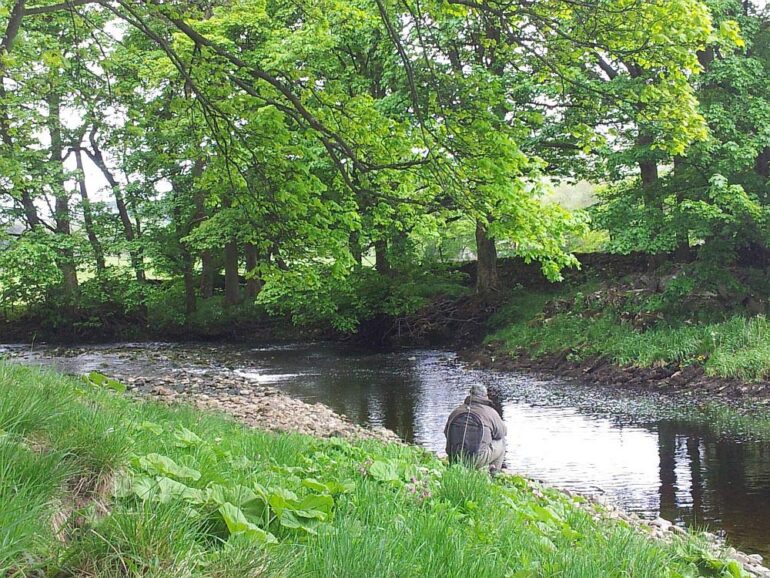
Conservtion
Since its formation, the MAA has not been content simply to fish the river. The founding object of the Association was and still is:
“To further such measures as may tend to promote the practice of angling and the breeding and preservation of fish and to afford the members opportunities of meeting together in a social manner for the exchange of ideas and experiences”.
Rather wordy but no less worthy today than it was in the days of Victorian high ideals. The founding members were quick to turn words into action and soon set about improving both the quality and quantity of brown trout in the river. Of prime importance was the establishment of a fish breeding house and you can learn more about this enterprise by clicking the link to ‘The Old Hatchery’ opposite
We strongly believe that our legal right to fish the river confers equal responsibility to conserve and improve habitats along the river corridor and nurture those native creatures who make that corridor their home. Throughout its 129 year history the Association has carried out works to the benefit of the river and its varied inhabitants. In the past these works have mainly consisted of the placement of weirs to provide pools and runs suited to trout at all stages of their life cycle. Now, with the greater availability of conservation grants and the activities of a dedicated Rivers Trust, we can expand our ambitions beyond the limited resources of the club.
Over the next few years we plan to work with the Ribble Rivers Trust to carry out a series of projects with the aim of ensuring that the river can carry its optimum stock of native fish. These projects are guided by professional advice and supported by the Wild Trout Trust. The projects will involve the erection of buffer fencing on selected stretches of the river and side becks above Horton to exclude grazing stock from the river banks and allow native plant species to regenerate; the planting of native trees that occur naturally in this upland landscape; the creation of in-stream cover for adult fish and, most important of all, an extensive survey of all plants, vertebrates and invertebrates both in river and bank side to provide a baseline against which to plan conservation measures and monitor progress.
The regeneration of bank side cover is vital for the overall health of the river habitat and ultimately the stock of fish it can carry. This cover provides shade and shelter for fish, places for invertebrates to lay their eggs and habitat for mammals such as water voles and otters.
In 2006 we completed first of these fencing projects. Details of this project can be found by following the link to the “Nanny Carr Project” on the left.
We have placed our first fly boards in one of the feeder becks. These boards are a traditional method of encouraging the production of olives. The boards were invented by William Lunn, legendary river keeper of the Houghton water on the Hampshire Test in the late 19th and early 20th century. They consist of a 6’ by 1’ pine board, pointed at both ends and anchored mid stream. The female olive lays her eggs on the underside of the board and when full the board may be left for the eggs to hatch in situe or moved to a stretch of river devoid of olives.
We have an intermittent mink problem and to combat this humanely we are beginning to experiment with mink rafts developed by the Game Conservancy Trust. These rafts are used to determine the presence of mink and enable trapping to be concentrated in areas where mink prove to be present.
The rafts are described in detail on the GCT web site but essentially consist of two pieces of marine ply 4’ by 2’ sandwiching a 2” thick sheet of polystyrene for buoyancy. In the centre of the raft is an oblong cut out housing a plastic mesh basket containing florists oasis to act as a wick which is overlain with wet clay. A wooden tunnel covering the basket completes the assembly and the idea is that the mink being curious investigates the tunnel and leaves evidence of its presence by footprints in the wet clay.
Once the presence of mink is confirmed a live catch trap can be placed in the tunnel and with luck you have your mink


